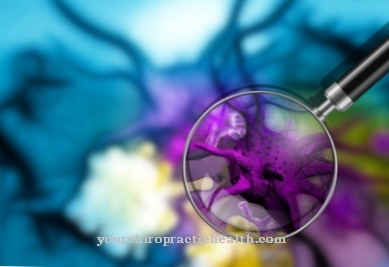At Apixaban it is a relatively new preparation that is prescribed to prevent thrombosis. The preparation is used in patients after knee replacement or hip surgery. In this case it is one of the preferred preparations because it can be administered in tablet form and is easier to dose than other preparations that also prevent blood clotting. In addition, the duration of the effect can be estimated relatively well.
What is apixaban?

The active ingredient apixaban belongs to the group of anticoagulants because it inhibits blood clotting. This happens by influencing the coagulation factors in the blood plasma. The preparation was developed in collaboration between Bristol-Myers Squibb and Pfizer.
Apixaban is a relatively new preparation that was approved in the European Union in 2011 under the name Eliquis. Initially, the approval was limited to the preventive avoidance of venous thromboembolism after operations on the musculoskeletal system.
In Germany and Switzerland, it was initially used after knee and hip operations. Further approvals, for example for the prevention of cerebral infarctions and for the treatment of deep vein thrombosis and pulmonary embolism, followed in December 2012 and July 2014.
Pharmacological effect
In contrast to vitamin K antagonists, apixaban, which is taken in tablet form twice a day, is easier to dose. Once the active ingredient has been absorbed through the digestive tract, apixaban acts as a more selective and inhibitor of the enzyme factor Ka.
This enzyme, which is produced in the liver, belongs to the group of coagulation factors. The factor Ka is responsible for the fact that thrombin is formed from prothrombin. As a result, the blood cannot clot because fibrin can no longer be formed from thrombin. The reason: Thrombin is the most important enzyme for blood clotting in all vertebrates, including humans.
The thrombin breaks down the glycoprotein fibrinogen into fibrinopeptides and fibrin. It is a protein that acts as a kind of glue when blood clots. To do this, it forms a long-chain network that closes the wound. The effects of apixaban last between nine and 14 hours in the human body.
Medical application & use
In most cases, apixaban is given to prevent thrombosis. This is a vascular disease that can cause blood clots to form in blood vessels. In this case, the blood clotting can, so to speak, turn against your own body.
This is actually a protective mechanism that ensures that a wound can be closed quickly after an injury. However, if the blood clot forms within a closed blood vessel, it can lead to serious illnesses such as pulmonary embolism or a stroke. In most cases, thrombosis forms in the veins of the cardiovascular system.
Patients who have had hip or knee surgery are particularly at risk. Because the undesirable consequences of a thrombosis can lead to a life-threatening condition within a relatively short period of time, the administration of preparations such as apixaban is the better alternative for the patient.
Risks & side effects
Nausea is just one of several side effects that can occur when taking apixaban. Because the preparation prevents the blood from clotting, it can lead to more bleeding even with minor injuries.
Furthermore, bruises form relatively quickly, in which blood escapes from the injured blood vessels and is then broken down by the body tissue. Patients may also develop anemia after administration of apixaban. This term is used to describe anemia which is caused by a decrease in the hemoglobin concentration in the blood. Hemoglobin is an oxygen-carrying protein, which is mainly found in the red blood cells of the blood.
Because the oxygen transport capacity of the blood is reduced as a result, the heart rate usually increases, which means that the blood is pumped faster through the organism. This in turn pushes people to their limits faster than would normally be the case.













.jpg)

.jpg)
.jpg)











.jpg)